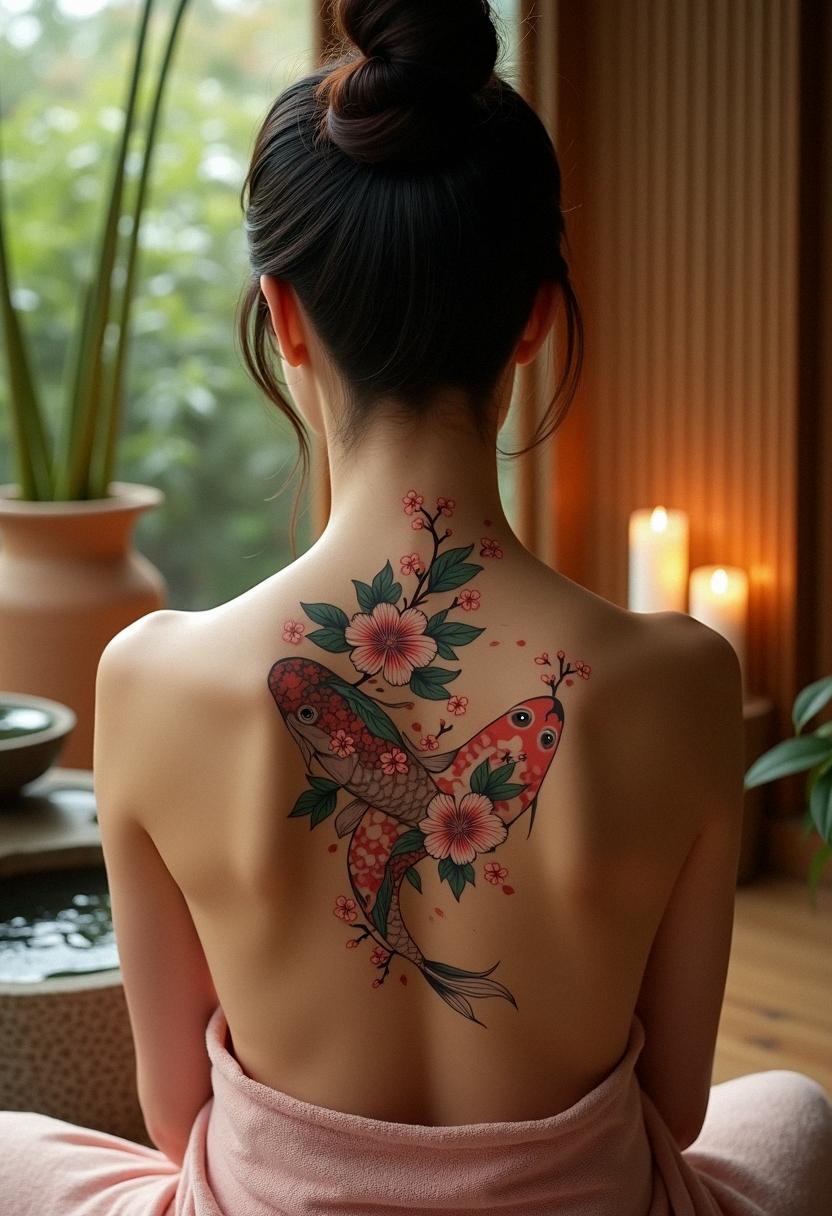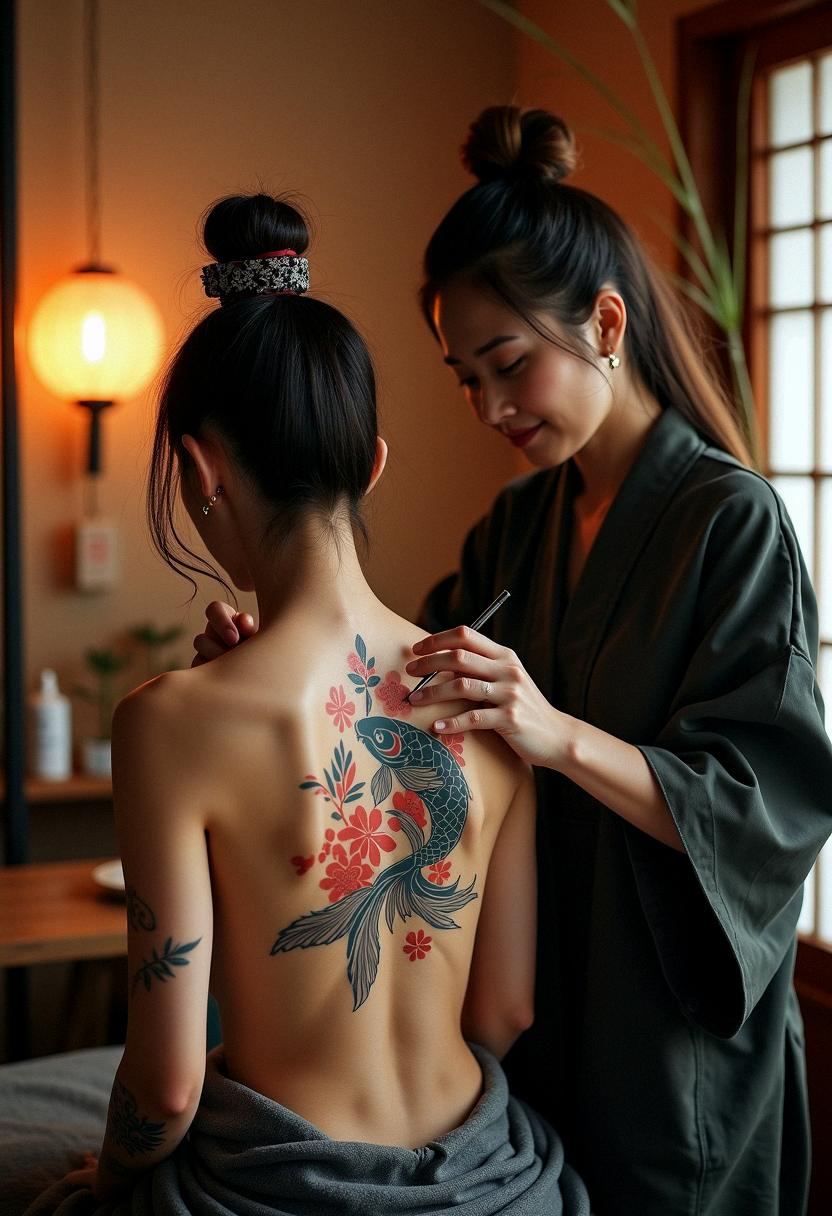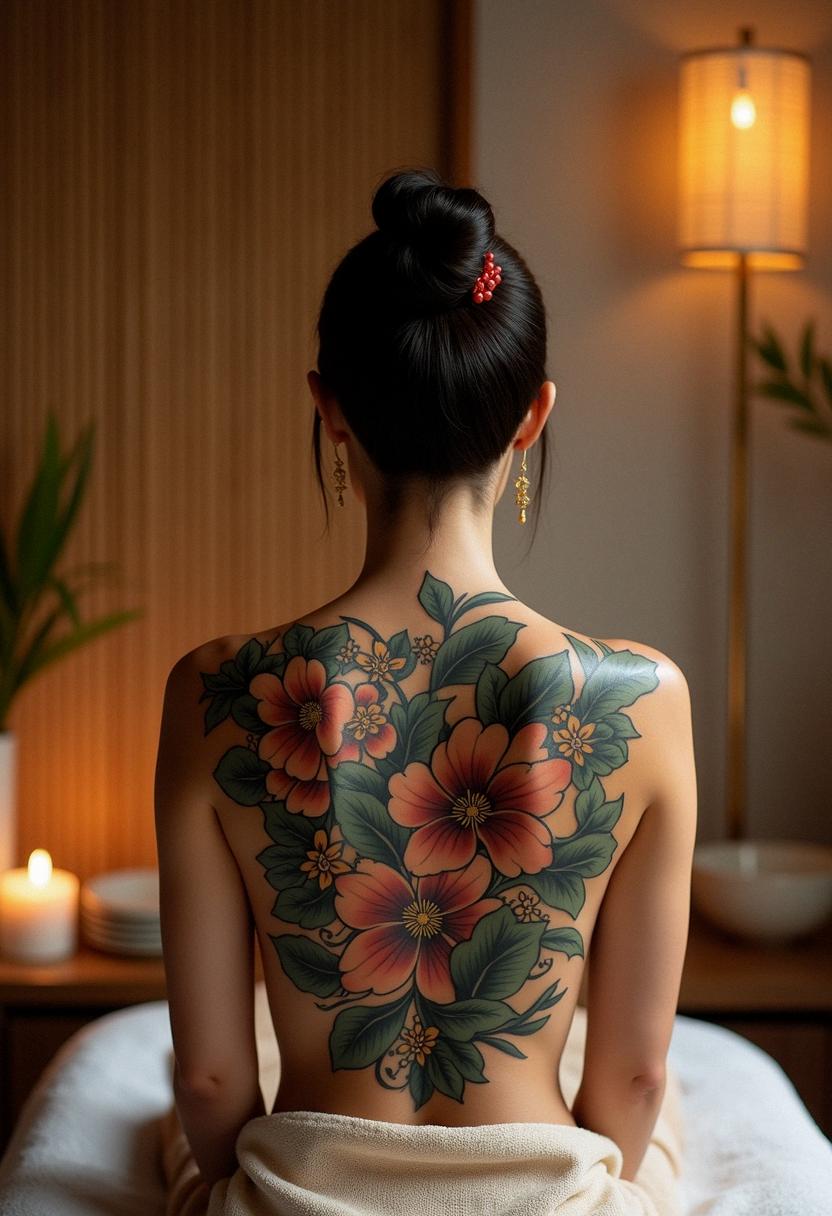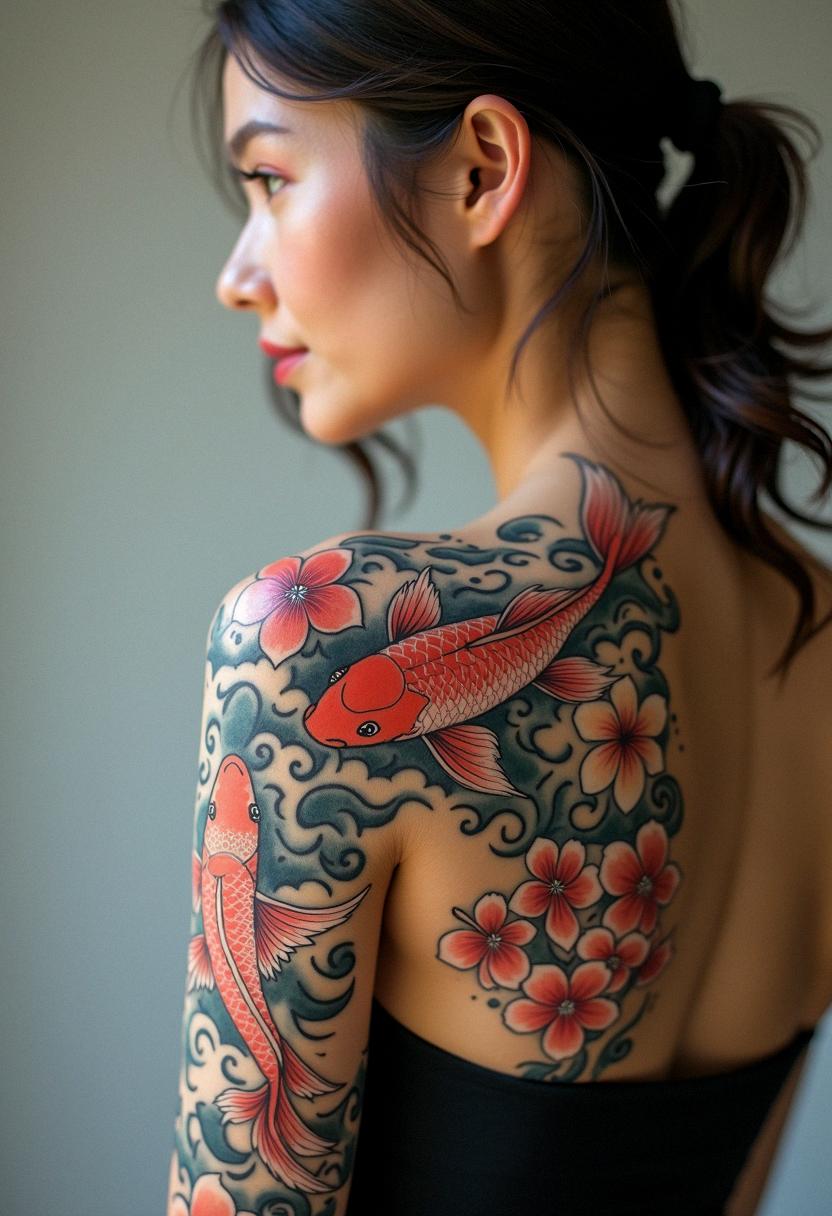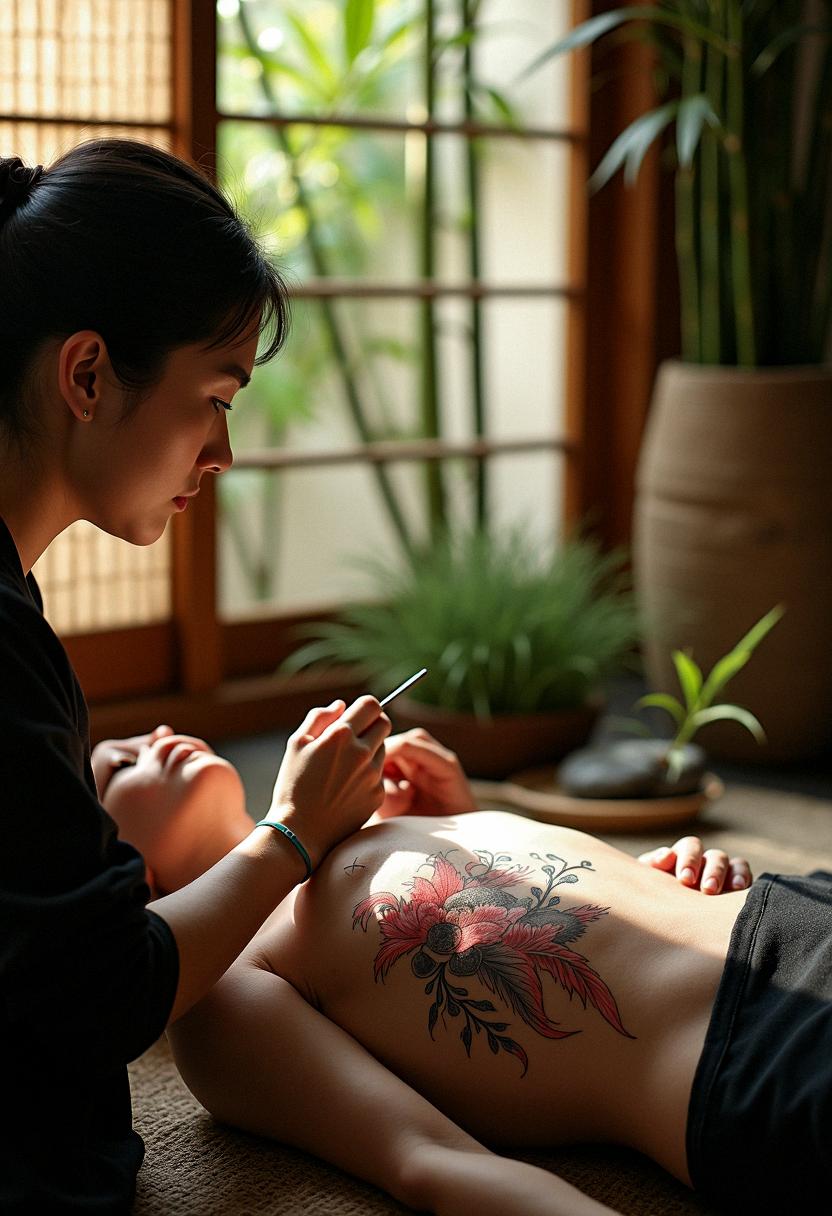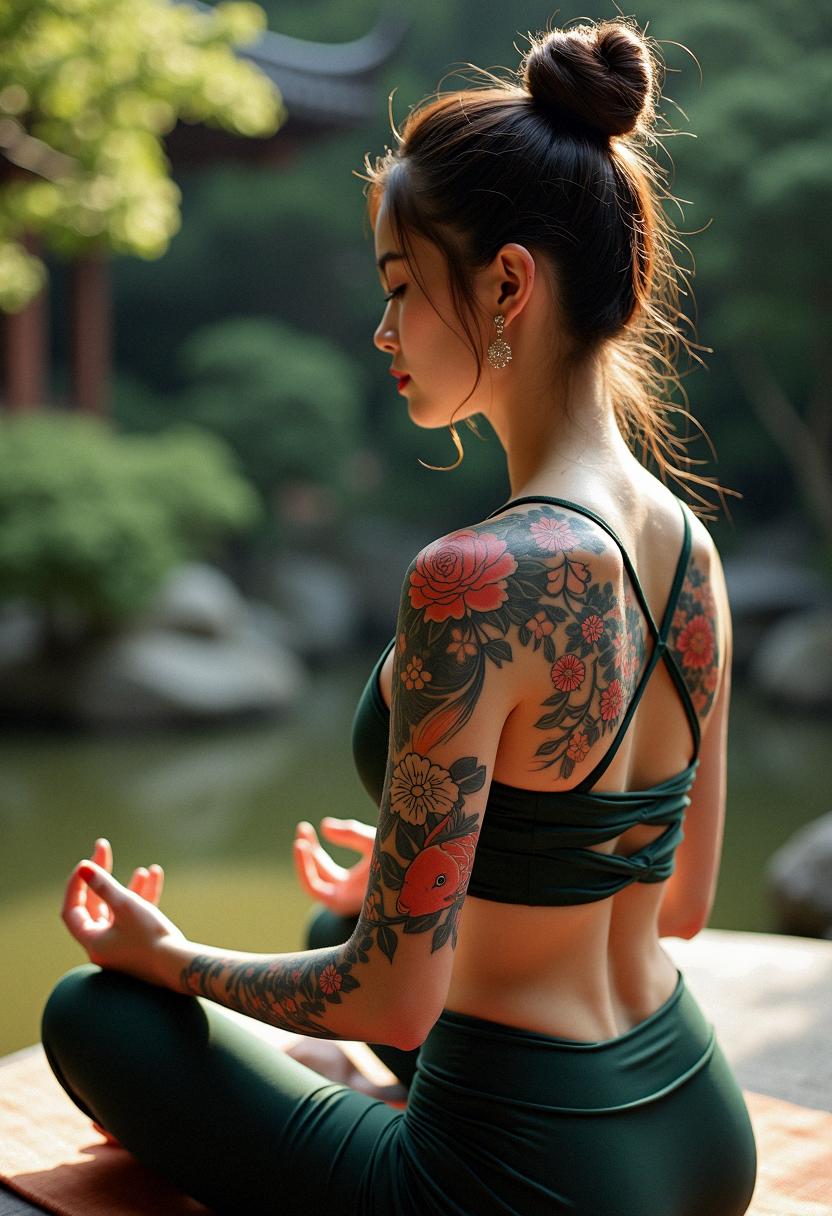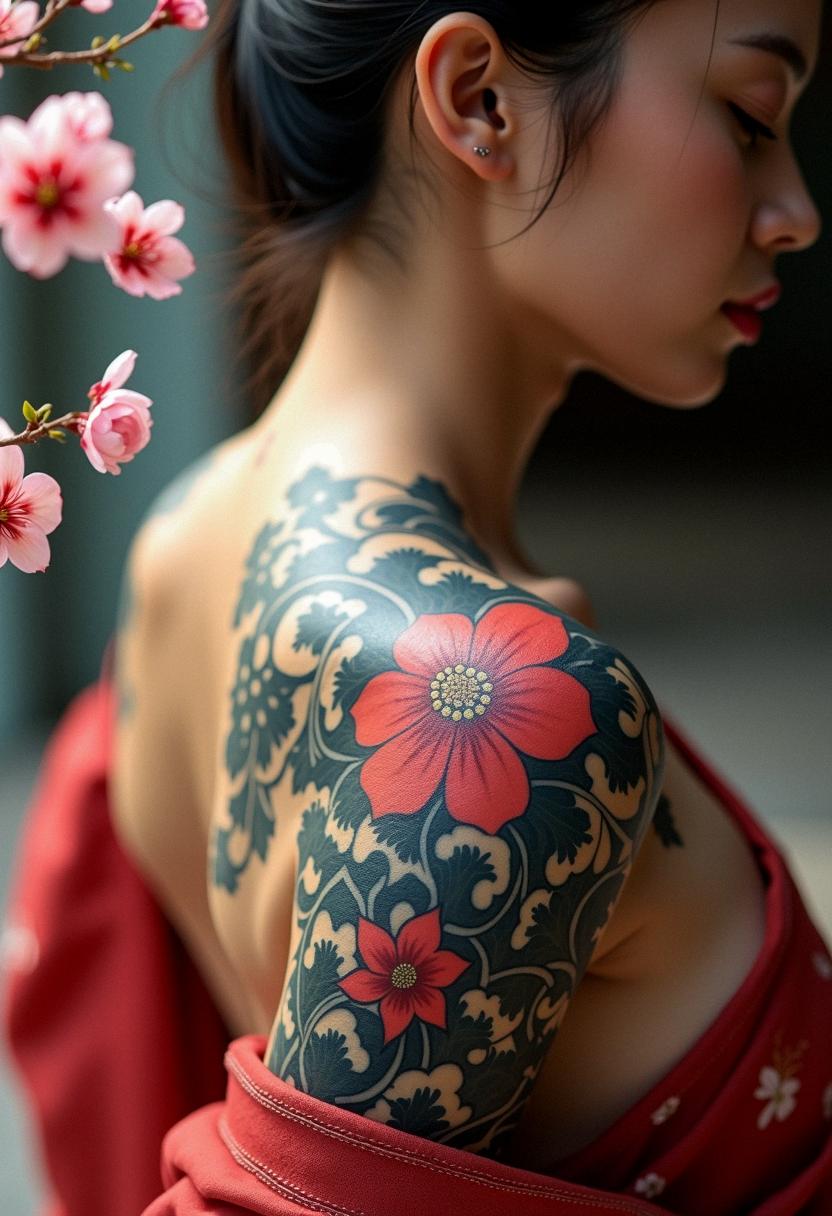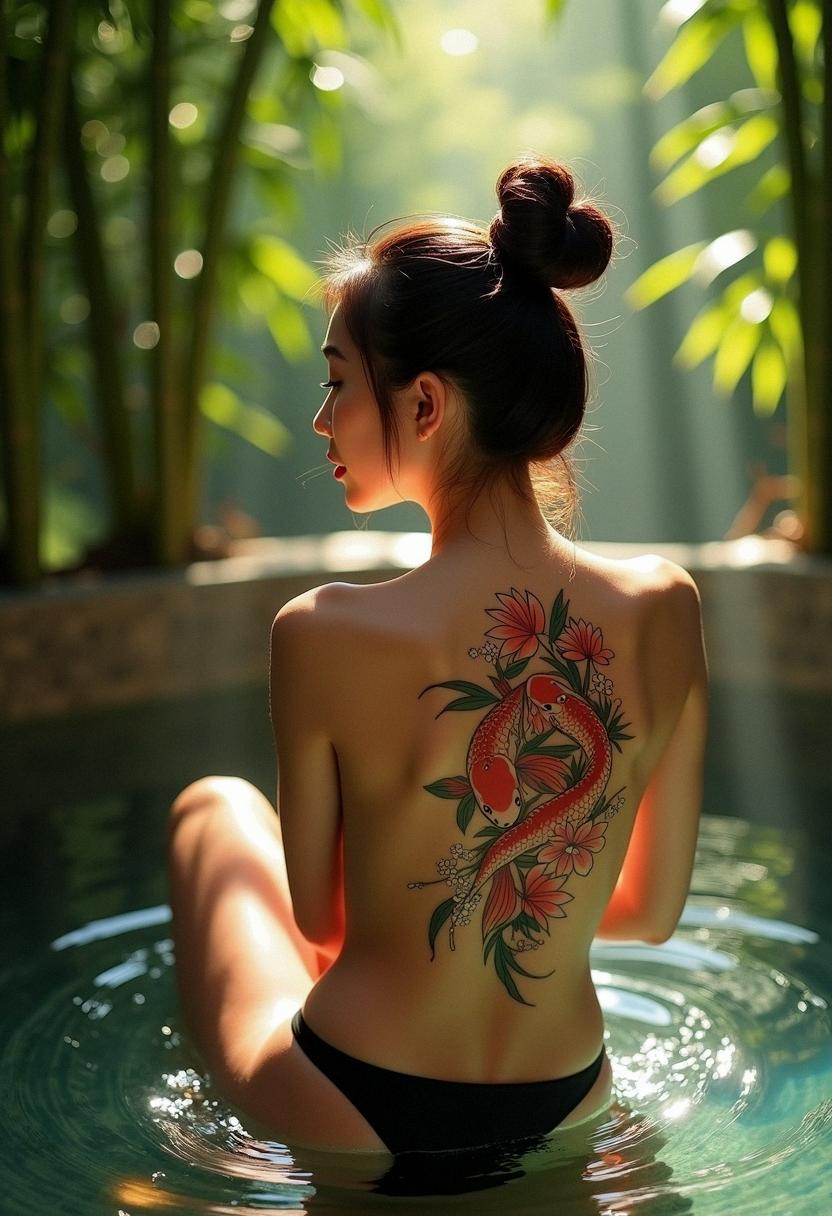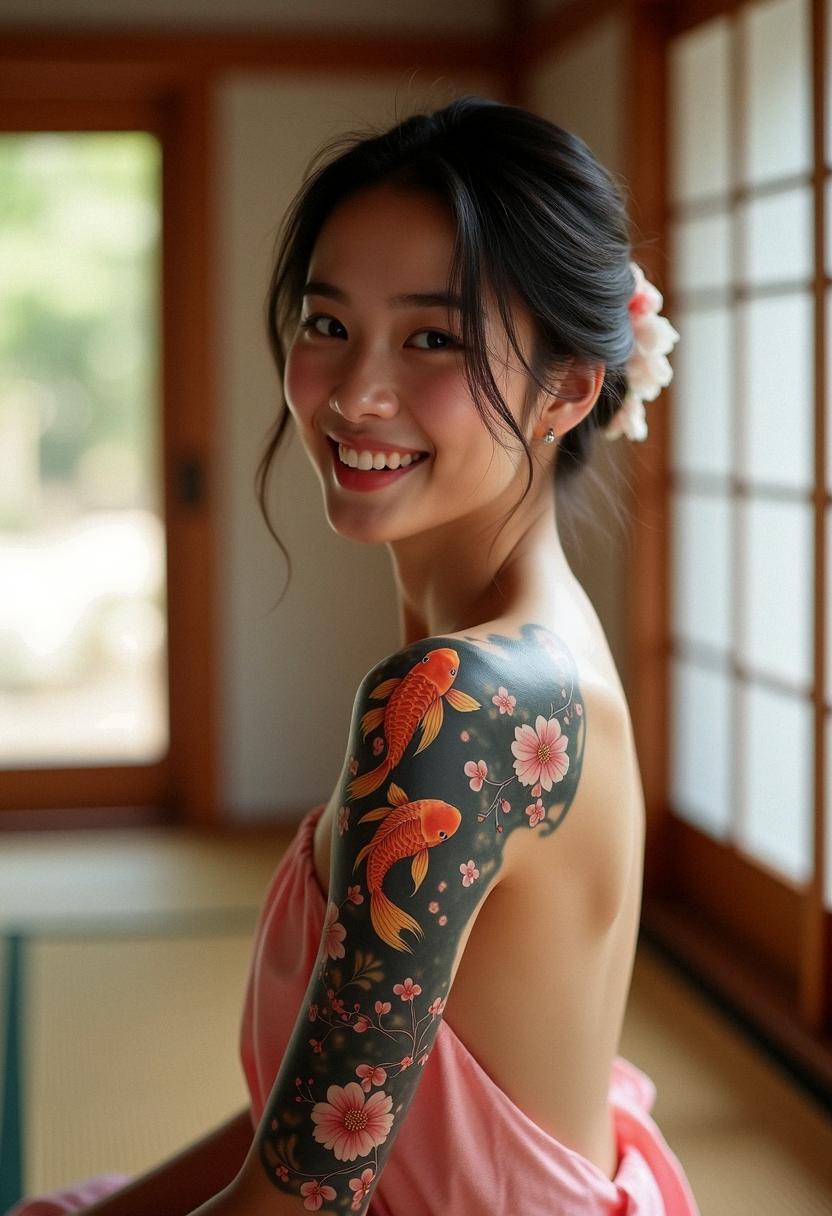Japanese traditional tattoo art is a fascinating journey into an ancient cultural practice that has been meticulously honed over centuries. This enduring art form has evolved to become a reflection of deep cultural narratives, imbued with symbols, legends, and philosophies that resonate with the human spirit. It provides a window into the world of bold aesthetics, detailed craftsmanship, and rich tradition—a tapestry that intertwines personal expression with cultural identity. Personally, I’ve always been captivated by how each tattoo tells its own unique story, almost as if it were a living piece of folklore in ink. The intricate designs and vibrant imagery present in Japanese traditional tattoos not only draw the eye but also invite the soul to explore the hidden depths of ancient wisdom and modern ingenuity. Every line and color is carefully chosen and executed with a sense of respect for long-standing traditions, imbuing the artwork with a historical elegance that is both timeless and contemporary. When you look at these tattoos, you’re not just seeing a design; you’re diving into a narrative that speaks of valor, mysticism, and a celebration of natural forces and elemental energies. The art form has withstood the test of time, surviving wars, societal shifts, and evolving cultural landscapes, all while retaining its original essence and purpose.
Historical Roots and Cultural Evolution
Tracing the historical roots of Japanese traditional tattoo art offers an immersive exploration into a past where ink was more than just decoration—it was a part of spiritual and social fabric. The evolution of these tattoos can be linked to ancient rituals, mariner’s traditions, and the ever-changing dynamics of Japanese society. Back in the day, tattoos were imbued with meanings that reached far beyond the surface, representing ancestral lineage, bravery in battle, and even rebirth after trials and tribulations. It’s truly intriguing how these designs have adapted over time, absorbing influences from various social strata—from laborers and outcasts to samurais and nobles—each leaving an indelible mark in the annals of art history. I often think about how each master tattoo artist not only honed their craft but also acted as a custodian of a living heritage, transmitting profound cultural narratives from generation to generation. The visual lexicon of Japanese tattoo artistry continues to evolve with a fusion of the old and the new, igniting a fascinating dialogue between tradition and modernity. The transformation reflects societal resilience, adapting and yet preserving the soulful intricacies of its origin, making it both an emblem of defiance and a badge of cultural honor.
Core Symbols and Iconography in Japanese Tattoos
The core symbols and iconography found in Japanese traditional tattoos are an intricate lexicon of visual storytelling. Every element, be it the graceful koi fish, the fierce dragon, or the delicate cherry blossom, carries a specific narrative and spiritual significance. In my experience exploring these designs, the symbolism is as rich and layered as the history it represents. For example, the koi fish is often a metaphor for perseverance and transformation, symbolizing the journey against tough challenges to reach one’s goals, while the dragon embodies power, wisdom, and protection. These symbols are not arbitrarily chosen but are steeped in centuries of cultural context, each stroke of the needle echoing the tales of ancient warriors, mystical folklore, and the imperishable beauty of nature. As you analyze the design intricacies, you realize the beauty lies in the harmonious balance between bold outlines and delicate shading, creating a dynamic interplay of light, shadow, and meaning. These visual cues not only add aesthetic appeal but also serve as talismans, offering guidance and strength to those who wear them. The vibrant imagery and symbolic elements are a staple in connecting the wearer to a larger narrative of cultural pride and enduring legacy.
Artistic Techniques and Traditional Methods
Delving into the artistic techniques behind Japanese traditional tattooing reveals a world of disciplined craftsmanship and innovative methodologies that have been refined over centuries. What makes this art form so captivating is the technique involved in its creation: the precise hand movements, the thoughtful selection of colors, and the deeply personal connection between the artist and the canvas of human skin. Throughout history, the process itself has been both an art and a ritual, demanding unwavering focus and immense skill. I’ve observed that the application of these methods is almost meditative—a blend of instinct and technique, where each careful dot and line is a testament to the mastery of the art. Artists often rely on the use of specialized tools that have been passed down through generations, ensuring that every layer of ink holds not only artistic beauty but also historical continuity. The emphasis on natural pigments, traditional methods of shading, and intricate detailing speaks volumes about the respect for heritage, with each technique contributing uniquely to the final masterpiece. The artistry involved in Japanese tattoos is not just about creating eye-catching designs but also about capturing the very soul of Japanese cultural expression in each deliberate stroke.
Role of Mythology and Folklore in Design Motifs
The influence of mythology and folklore in Japanese traditional tattoo designs is profound, adding a layer of mystical allure that invites deep contemplation and personal connection. When I explore these artistic expressions, I am always struck by how myth and reality intermingle gracefully in a mesmerizing dance of ink and skin. Traditional tattoo motifs often draw upon legendary creatures, ancient deities, and symbolic narratives that have been passed down through countless generations. Whether it’s an awe-inspiring phoenix or a formidable oni demon, each figure is steeped in stories of struggle, triumph, and the eternal balance between the natural and supernatural worlds. This vivid storytelling aspect allows the wearer to carry a piece of ancient wisdom and cultural identity with them, translating personal trials into symbols of resilience and rebirth. The folklore that underpins these designs isn’t just decorative—it’s imbued with purpose and intent, resonating with deeply personal experiences and universal themes of life, death, and regeneration. This marriage between myth and art provides a living, breathing tapestry of cultural memory, where every design element is loaded with significance and serves as a bridge connecting the modern to the mythic.
Cultural Significance and Social Perspectives
Japanese traditional tattoo art has always been more than skin-deep; it acts as a cultural emblem that challenges societal norms and celebrates personal identity. I find it incredibly fascinating how these tattoos can serve as both a deeply personal attachment and a broader symbol of cultural affiliation. Historically, tattoos were often markers of social status, courage, or even defiance against the established order, and this traditional art form still sparks conversation today. People who choose these designs are not only embracing a stunning aesthetic but are often making a statement about individuality and heritage. At its core, every image holds a mirror to societal transformation, reflecting changing attitudes toward art, beauty, and the power of self-expression. Critically, the social perspectives surrounding these tattoos have evolved over time, from stigmatization to becoming revered cultural icons. In my view, this evolution exemplifies the indomitable human spirit—a desire to bridge the gaps between personal identity and collective heritage, using art as the universal language of expression. The layers of social meaning behind these tattoos make them a conversation piece that is endlessly fascinating, laden with a history that challenges, questions, and ultimately transforms conventional norms.
Modern Interpretations and Fusion with Contemporary Styles
The dynamic world of Japanese traditional tattoo art is continually evolving, embracing modern interpretations while staying true to its historical roots. Today, I see how artists blend time-honored techniques with contemporary design elements in a vibrant fusion that redefines what traditional tattooing can be. There’s a wonderful interplay between the old and the new, where classical motifs such as dragons, koi, and cherry blossoms are reimagined with fresh, avant-garde twists that speak to a new generation of tattoo enthusiasts. This innovative fusion is not about discarding the past; rather, it’s about celebrating and reinvigorating ancient symbols through modern aesthetics. It has become an exciting battleground of ideas, where artists use state-of-the-art technology and fresh artistic sensibility to create designs that honor tradition while exploring uncharted creative territories. This melding of eras invites enthusiasts to embrace a broader spectrum of meaning and expression—a true testament to the enduring power of this art form. Modern studios and ink legends now offer a fusion of classic storytelling with fresh visual narratives, resulting in tattoo art that is as progressive as it is respectful of its rich, storied past.
Choosing the Right Tattoo Artist and Studio
Deciding on the right artist and studio for your Japanese traditional tattoo can be both an exciting and deeply personal undertaking. I’ve come to realize that this decision is not simply about style or technical ability—it is about finding a creative partner who deeply understands the symbolic language and cultural significance behind each design. In my experience, the best tattoo artists excel in marrying the rich traditions of Japanese art with personal narratives in a way that feels both authentic and innovative. The right studio will have a comfortable, respectful atmosphere that honors the time-honored practices of the craft while also explaining modern interpretations in clear, relatable terms. It’s essential to take time assessing portfolios and engaging in thorough consultations, ensuring that each stroke of the needle will contribute to a piece of art that tells your story in a meaningful manner. The process, while sometimes daunting, is ultimately rewarding: it’s about trusting a skilled artisan to transform your ideas and inspirations into a permanent, expressive piece of art. The journey involves careful research, heartfelt conversation, and a shared passion for bringing cultural legacy to life on your skin.
Tattoo Aftercare, Maintenance, and Longevity
After you commit to a Japanese traditional tattoo, proper care and maintenance become essential to preserve the intricate details and vibrant colors that define the art form. In my experience, following a diligent aftercare routine is just as crucial as the initial design process—the artwork on your skin deserves the care and respect it commands. Immediately after the tattoo session, the artist typically gives detailed instructions, and I’ve learned that adhering to these guidelines can mean the difference between a fresh, vivid piece and one that quickly fades. The journey involves keeping the area clean, moisturized, and protected from abrasive elements and harmful UV rays. Beyond the initial healing phase, ongoing maintenance, including regular touch-ups and mindful lifestyle habits, plays a vital role in ensuring that your tattoo ages gracefully. There’s a special sentiment in knowing that the care you put into the preservation of your tattoo is a reflection of the respect you have for its history and personal symbolism. It’s more than skincare—it’s a commitment to sustaining a piece of cultural artistry that will carry your personal narrative well into the future.
Future Trends and Preservation of Traditional Aesthetics
Looking ahead, the future of Japanese traditional tattooing is as exciting as it is profound. I see this art form standing at the intersection of time-honored techniques and innovative trends, continuously drawing on its rich heritage while adapting to modern artistic sensibilities. As more artists gain a deep understanding of the cultural significance and historical depth behind each motif, the fusion of classic designs with contemporary elements is poised to become even more pronounced. This evolution isn’t about abandoning tradition—it’s about preserving the essence of ancient stories while opening up new avenues for creative expression. The role of technology in refining the ink, expanding the color palette, and even changing the way designs are conceptualized is growing steadily, yet every modern twist pays homage to a storied past. It’s an exciting prospect, knowing that the artistry of Japanese traditional tattoos can continue to thrive in a world that’s constantly changing. The journey into the future of this art form emphasizes not only the need for innovation but also the importance of preserving cultural integrity, ensuring that every new creation remains deeply connected to its profound origins and continues to be celebrated for its timeless beauty.

